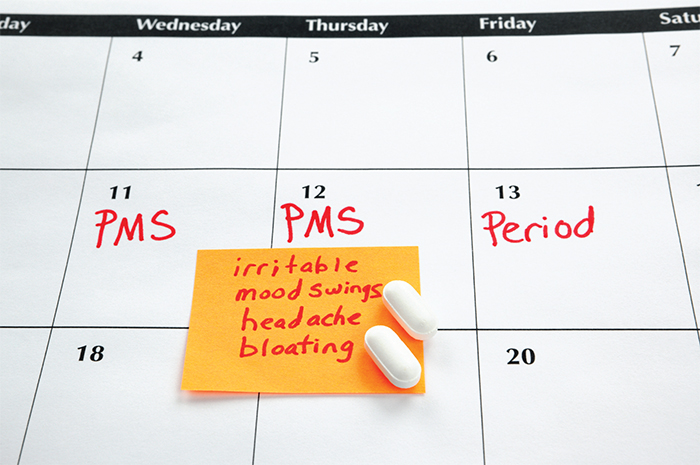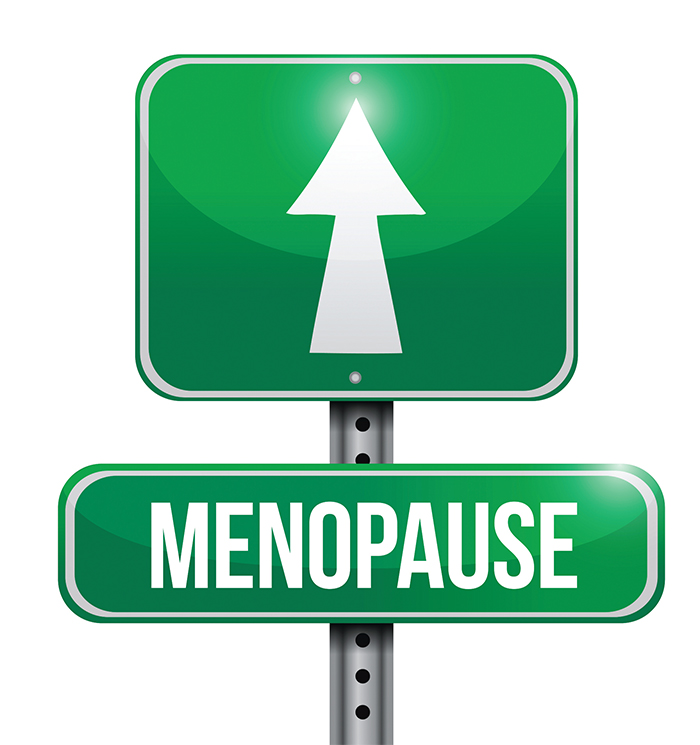Women's health: Pause for thought
In Clinical
Follow this topic
Bookmark
Record learning outcomes
Information about HRT and the menopause is very easy to come by thanks to widespread coverage in the media and on the internet, but not all the advice on offer is reliable €“ which is where pharmacists come in...
Learning objectives
After reading this feature you should be able to:
- Understand the importance of balancing the benefits of HRT with the risks
- Identify the symptoms of the menopause
- Offer evidence-based advice on how to manage symptoms.
 Hormone replacement therapy (HRT) was once viewed as the panacea for many of the symptoms associated with the menopause. However, prescriptions for HRT almost halved following the publication of two studies that linked the treatment to an increased risk of breast cancer and cardiovascular disease.
Hormone replacement therapy (HRT) was once viewed as the panacea for many of the symptoms associated with the menopause. However, prescriptions for HRT almost halved following the publication of two studies that linked the treatment to an increased risk of breast cancer and cardiovascular disease.
However, in November last year, NICE published guidance on the diagnosis and management of the menopause, which advises that HRT should be prescribed more frequently despite the recognised risks.1 Having reviewed the evidence from 51 studies, NICE says no other treatment has been shown to be as effective as HRT for menopausal symptoms, although the balance of risks and benefits varies among women.
The guidance says pharmacists and other healthcare professionals need to be able to provide women with €robust€ information about the risks and benefits of HRT in order to be able to help them make an informed choice about whether to take it to relieve their symptoms.
The cancer risks of taking HRT
The Women's Health Initiative (2002), a sizeable randomised controlled trial, and the Million Women Study (2003), a multicentre, population-based prospective cohort study of one million women aged 50 and over, raised concerns about the safety of HRT.
Cancer Research UK scientists, who ran the Million Women Study, found strong evidence that HRT can cause breast, womb and ovarian cancer. The risks are that two more women will get breast cancer and one more will get ovarian cancer if 1,000 women take HRT at the age of 50 for five years. Avoiding HRT could prevent 1,700 cancers a year. However, NICE says that:
- The baseline risk of breast cancer for women around menopausal age in the UK varies from one woman to another
- Oestrogen-only HRT is associated with little or no change in the risk of breast cancer
- HRT with oestrogen and progestogen can be associated with an increase in the risk of breast cancer
- Any increased risk reduces after stopping HRT.
The heart disease risks of taking HRT
Prolonged lack of oestrogen puts post menopausal women at increased risk of osteoporosis
The Women's Health Initiative study reported a 29 per cent increase in heart attacks and a 41 per cent increase in strokes among HRT users. However, NICE says this association between HRT and cardiovascular disease has since been disputed and the results show that the risk varies in accordance with individual factors.
The new guidance recommends that women with cardiovascular risk factors should not be excluded automatically from taking HRT as it does not increase cardiovascular disease risk when started in women under 60 years of age, and it does not affect the risk of dying from cardiovascular disease.
Dr Claire Knight, Cancer Research UK's health information manager, says: €We know that using HRT increases the risk of developing breast, ovarian and in some cases womb cancer, but HRT can also offer effective relief from menopausal symptoms. What these new guidelines from NICE reiterate is that there are many factors at play in a woman's choice to use HRT or not and women need clear, evidence-based information around the risks and benefits to help them make an informed decision.€
Dr Imogen Shaw, a GP with a special interest in gynaecology and NICE guideline developer, says healthcare professionals need to understand that the symptoms of the menopause can be extremely debilitating and impact on women's quality of life. €The effects of menopause are often misunderstood and underestimated €“ it can impact on health significantly in both the long- and short-term. Menopause can cause unbearable hot flushes and night sweats.€
Stages of the menopause
The menopause is defined as the time when a woman stops having periods and is no longer able to get pregnant naturally. It occurs when a woman's store of eggs depletes and oestrogen levels fall €“ usually between 45 and 55 years of age, with the average age being 51. Menopause symptoms typically continue for around four years after the last period. For around 10 per cent of women symptoms can last up to 12 years.
During the first stage, known as the perimenopause, periods start to become less frequent over a few months or years before they stop altogether, although sometimes they can stop suddenly. Around one in 100 women experience the menopause before 40 years of age or may have menopause triggered as a result of treatment for hormone-dependent cancer or gynaecological conditions. This is known as premature menopause.

Managing the menopause without HRT
Pharmacists can provide a patient-centred approach to advising women about the menopause, says Hilary Cunningham, a Numark information pharmacist. €Most women may simply want reassurance that the symptoms they are experiencing are normal or they may want advice or recommendations for treatment of their symptoms.
€Many women will believe that they simply have to tolerate the symptoms and may think there is no help available. Pharmacists are ideally placed to discuss symptoms alongside treatment options and their potential benefits and risks, or give simple lifestyle advice that could help to minimise symptoms.€
The menopause is a sensitive issue for many women who may not want to admit they are menopausal, so somebody might come in and say they are suffering from a symptom such as insomnia or memory loss, says Norma Goldman, a pharmacist, health promotion specialist, and founder of the Menopause Exchange.
€This is where pharmacy staff can use their skills to encourage them to talk and open up in confidence about what is really worrying them. Understanding the menopause is important for pharmacists because this is an area in which they can provide quality advice that can really have a beneficial impact on a woman's quality of life.€
In addition to giving advice on the risks and benefits of taking HRT, pharmacists can also advise women on a wide range of alternative products that can help alleviate their symptoms.
Managing common women's health issues
Thrush and bacterial vaginosis
Bacterial vaginosis (BV) is a common, but poorly understood condition, caused by an imbalance of bacteria in the vagina. It is characterised by a white or grey discharge, with a strong fishy smell. BV doesn't usually cause any vaginal soreness or itching and about half of women will have no symptoms.
The condition isn't serious for the vast majority of women, although it may be a concern if symptoms develop in pregnancy or in a woman with a history of pregnancy-related complications. BV is treated with a short course of oral antibiotics or an antibiotic gel applied inside the vagina. Some women may have repeated episodes of BV.
Vaginal thrush is an infection caused by the candida albicans fungus. Typical symptoms include itching and soreness around the entrance of the vagina, an odourless discharge, which may be thick and white or thin and watery, and pain during sex. The skin around the vagina can be red, swollen or cracked. It can be treated with a short course of antifungal medication.
Urinary tract infections
A urine infection in the bladder (cystitis) is common in women. It can be painful and uncomfortable, but it usually clears up within a few days or can be treated with a course of antibiotics. The symptoms are pain or a burning sensation when urinating, a need to urinate frequently and pain in the lower abdomen.
Paracetamol or ibuprofen can be recommended to ease the pain and discomfort. Women should be referred to the GP if their symptoms are very uncomfortable or suddenly get worse; they develop a high temperature; are pregnant; or have diabetes. Antibiotics can help speed up recovery time and are usually recommended for women who keep getting UTIs.
Premenstrual syndrome
Premenstrual syndrome (PMS) is the name given to the physical, psychological and behavioural symptoms that can occur in the two weeks before a woman's monthly period. Symptoms include bloating, breast pain, mood swings, irritability and loss of interest in sex. The symptoms improve when the period starts and disappear a few days afterwards.
The exact cause of PMS isn't fully understood but it is thought to be linked to the changing levels of hormones in the body during a woman's menstrual cycle.
PMS most commonly affects women aged 30-40 years. For most, the symptoms are mild and not troublesome but for about one woman in 20 the symptoms become bad enough to disrupt normal functioning and quality of life.
Various products can be sold in pharmacy for the treatment of PMS, including calcium, magnesium and vitamin B6 (pyridoxine), although there is very little evidence to support their use.
Lifestyle changes, such as a healthy diet, regular exercise, techniques to reduce stress, regular sleep and cognitive behavioural therapies, may help. A selective serotonin reuptake inhibitor (SSRI), the combined oral contraceptive pill and oestrogen given via a patch or gel have been shown to improve symptoms.
Painful and heavy periods
Menorrhagia, or heavy periods that recur each month, are a problem when they stop a woman undertaking her normal activities. A good indication that blood loss is excessive is if a woman says she is using an unusually high number of tampons or pads, she experiences flooding (heavy bleeding) through to her clothes or she needs to use tampons and towels together.
In most cases, no underlying cause of heavy periods is identified but some conditions and treatments have been linked to menorrhagia, including uterine fibroids, intrauterine contraceptive devices, anticoagulant medication and polycystic ovary syndrome.
If treatment is necessary, medication can include the levonorgestrelreleasing intrauterine system (LNG-IUS), tranexamic acid, non-steroidal anti-inflammatory drugs (mefenamic acid, naproxen and ibuprofen), the combined oral contraceptive pill, oral norethisterone or injected progestogen. Surgery may also be an option.
Dysmenorrhoea or period pain is experienced by most women at some point in their lives. The pain usually starts when bleeding begins and normally lasts for 48-72 hours. Most cases of period pain can be treated with over-the-counter painkillers. Self-help techniques such as applying heat or doing gentle exercise may also help.

Vasomotor symptoms
HRT is the most effective treatment for vasomotor symptoms, which include night sweats, hot flushes and vulvovaginal atrophy.
If HRT is contraindicated or a woman does not wish to take it, non-hormonal options, such as clonidine, or an antidepressant, such as fluoxetine, citalopram or venlafaxine, may be prescribed. NICE says these treatments should not be offered routinely or as first-line treatment. Lifestyle advice should be offered and vaginal moisturisers or lubricants can be recommended for vaginal dryness; these can be obtained either on prescription or OTC. Topical oestrogens can be used for the relief of vaginal atrophy.
For women considering complementary therapies, NICE says pharmacists should explain that, although there is some evidence that isoflavones and black cohosh may relieve vasomotor symptoms, their safety is unknown and different preparations may vary in their effects.
Mood disturbance, anxiety and depression
NICE recommends that women suffering from mood disturbance, anxiety and depression should consider self-help groups, cognitive behavioural therapy or antidepressants, although it says there is no clear evidence for antidepressants to ease low mood in menopausal women who have not been diagnosed with depression.
Menorrhagia
When women are going through the perimenopause, they may experience heavy bleeding as a result of irregular heavy periods and this may make them iron deficient. Symptoms of iron deficiency include a pale tongue, dizziness, fatigue and breathlessness. Iron supplements or dietary sources rich in iron (e.g. spinach and red meat) could be considered to combat this.
Migraine
As oestrogen levels fall during the perimenopause and the menopause, migraine attacks may become more severe or happen more often, according to the Migraine Trust.
In the few studies that have been conducted, it is suggested that the menopause makes migraine worse for up to 45 per cent of women, 30-45 per cent do not notice a difference and 15 per cent notice an improvement. Some women find their attacks continue to follow a cyclical pattern years after the menopause, although the reason for this is unclear.
There is little research evidence to be found on the effects of HRT on migraine in women €“ it can help some women but may aggravate migraine for others, says the Migraine Trust. Pharmacy staff can advise women on the range of headache and anti-migraine medicines available in the pharmacy and offer advice on dealing with a migraine attack.
Osteoporosis
Prolonged lack of oestrogen puts postmenopausal women at increased risk of osteoporosis. One in two women over the age of 50 years develop osteoporosis and the cost to the NHS of fractures in osteoporotic patients is in excess of £1.5 billion.
HRT reduces the risk of osteoporosis. Advice for menopausal women on preventing osteoporosis should include: eat healthily; quit smoking; reduce alcohol consumption; and do at least 150 minutes of moderate-intensity aerobic activity every week.
Pharmacists have a role in identifying women at risk of osteoporosis and referring them to the GP, counselling patients with osteoporosis and conducting MURs with them. They can also advise on dietary supplements and pain relief.
Bladder weakness
Urinary incontinence (the unintentional passing of urine) is a common problem for menopausal women as the level of oestrogen declines, leading to reduced effectiveness of the muscles around the urinary tract that hold the bladder closed.
Steps that may help include cutting down on tea, coffee and alcohol (since they are diuretics and make the body produce more urine), maintaining a healthy weight and keeping fit €“ in particular doing exercises to strengthen the pelvic floor muscles. Purpose-made bladder weakness protection, such as TENA Lady, can also be recommended.
Weight gain
The hormonal changes of the menopause may make some women gain weight, particularly around the abdomen, but this may also be related to ageing, a time when women are likely to exercise less and lose muscle mass.
If a woman has a waist size greater than 80cm this could put her at higher risk of heart disease, type 2 diabetes and cancer. Pharmacy teams can offer lifestyle advice and information about diet and weight loss products.
Key facts
- The symptoms of the menopause can be extremely debilitating for some women
- HRT is the most effective treatment for vasomotor symptoms of the menopause
- Any increased cancer risk reduces after stopping HRT
Reference
1. NICE. Menopause: diagnosis and management (NG23) 12 November 2015.
